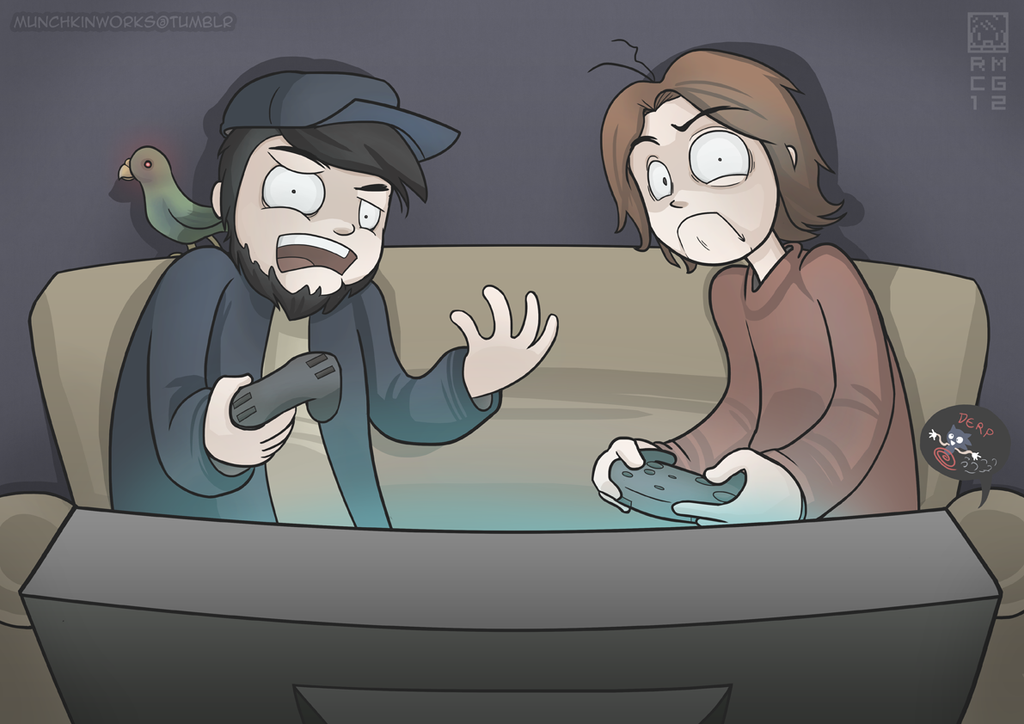This post has not been edited by the GamesBeat staff. Opinions by GamesBeat community writers do not necessarily reflect those of the staff.

Last Friday Gamasutra’s Mike Rose posted an in-depth study into the ethics of paying for Youtube coverage after questions started to be raised that prominent ‘YouTubers‘ are being paid to give favourable coverage to certain games. The theory goes that YouTube, and the ‘YouTubers‘ who produce hours of footage of themselves playing and commenting on games are now as vital a marketing tool for video games as the more traditional print- and television-ads.
The dodgy thing about this, is that whilst it is (for example) obvious that the content between segments of a TV show is designed to sell rather than inform, the same cannot be said of YouTube content, when functionally a commentator enjoying a game appears the same no matter what the reason. At a certain point you have no idea whether their enjoyment is coming from the game itself, or the nice fat cheque that will be coming their way shortly.
At any rate it’s important to note that Gamasutra’s hypothesis appears to be true. 26% of YouTubers with over 5,000 subscribers reported that they had received money from publishers in exchange for recording videos. The fact that it happens is thus not up for debate. The real question is whether this is right or not.
Personally I’m inclined not to care.
This is not because I look down on YouTube as a medium for video games journalism. On the contrary I applaud the way it’s managed to reach a whole new portion of fans who would never dream of visiting a more traditional outlet like IGN or Gamespot. Although commentators like PewDiePie appeal to a wide cross-section of video game fans, his primary viewers are “teen girls” and other demographics usually absent from online gaming communities, which for years the combined might of entire editorial staffs at bigger websites have been failing to draw in.

No, instead the reason I’m not worried about the journalistic standards of YouTubers is because of the nature of their medium when compared to text. Words are malleable. They can cast more light on a topic than can even be gained from experiencing it yourself when used well, but the slightest omission or miscommunication can completely change how a topic is covered. Describing a game’s loading times as “unbearable” means completely different things from person to person, and one man’s “excessive gore” might be another’s “realism.”
Of course it’s just as possible to use similar levels of manipulation in YouTube videos. A producer might choose to edit together a video to showcase exclusively the glitches they found in a game, when in reality such glitches may occur rarely, and only as the result of intentional manipulation by the player. Likewise it’s easy to see how colourful commentary can turn even the most mundane game into a masterpiece.
For the most part though, YouTube videos have little to hide. The vast majority consist of vast unedited swathes of raw gameplay footage, where it’s very easy to distinguish between what the commentator is saying about the game and what the truth is. A review might ambiguously complain about a game’s loading times, but a YouTube video will show you directly how bad they actually are, and you might find your tolerance for that sort of thing is far higher than the average professional reviewer.
Sonic 06 is fun! (Game Grumps) by RoseCG on deviantART
We shouldn’t understate the role of the running commentary over the top of all this gameplay footage, but at the same time it’s something that can be far more easily ignored than a passage of text accompanied by a couple of screenshots. No amount of witty banter is going to convince you that Sonic ’06 is worth playing in the same way that a glowing review might have done (see Play magazine’s review here). The strengths of the medium are simply different, and so too are the relative standards to which they should be held.
I’m not saying that I wouldn’t appreciate YouTubers disclosing when a video has been sponsored, but I don’t think the danger faced is nearly as much of a threat to their integrity as (for example) the lavish press events more traditional video game journalists are often treated to. The greatest strength of the Let’s Play is that it ultimately lets the viewer decide whether a game is worth playing, and as such the biases of the producer simply aren’t as important.
This week Jon got his first job rejection through. He hopes to bottle his raw disappointment and sell it as a cure for the common cold (patent pending).

